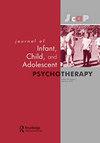治疗性别焦虑儿童和青少年的临床和伦理考虑:当做得少就是帮助更多
Q3 Psychology
Journal of Infant, Child, and Adolescent Psychotherapy
Pub Date : 2021-10-02
DOI:10.1080/15289168.2021.1997344
引用次数: 7
摘要
通过对最近发表的治疗方案、研究结果和临床经验的分析,并在“首先,不伤害”的原则指导下,作者认为,在治疗性别焦虑的青少年中使用药物和手术干预,特别是考虑到已知的儿童跨性别认同的短暂性,在临床和伦理上都是错误的。他进一步指出,心理治疗是这些患者的最佳治疗选择,而被大多数倡导药物和手术干预的人所忽视。作者详细阐述了他发现对这一人群最有效的对患者及其父母的心理治疗技术的一些修改。本文章由计算机程序翻译,如有差异,请以英文原文为准。
Clinical and Ethical Considerations in the Treatment of Gender Dysphoric Children and Adolescents: When Doing Less Is Helping More
ABSTRACT Through an analysis of recently published treatment protocols, research findings and clinical experience, and guided by the principle of “first, do no harm,” the author argues that the use of pharmacological and surgical interventions in the treatment of gender dysphoric youth, especially in light of what is known about the transience of cross-gender identification in children, is mistaken both clinically and ethically. He further argues that psychotherapy, neglected by most of those advocating pharmacological and surgical interventions, is the best treatment option for these patients. The author elaborates some of the modifications of psychotherapeutic technique with both patients and their parents that he has found to be most effective with this population.
求助全文
通过发布文献求助,成功后即可免费获取论文全文。
去求助
来源期刊

Journal of Infant, Child, and Adolescent Psychotherapy
Psychology-Clinical Psychology
CiteScore
1.70
自引率
0.00%
发文量
37
 求助内容:
求助内容: 应助结果提醒方式:
应助结果提醒方式:


